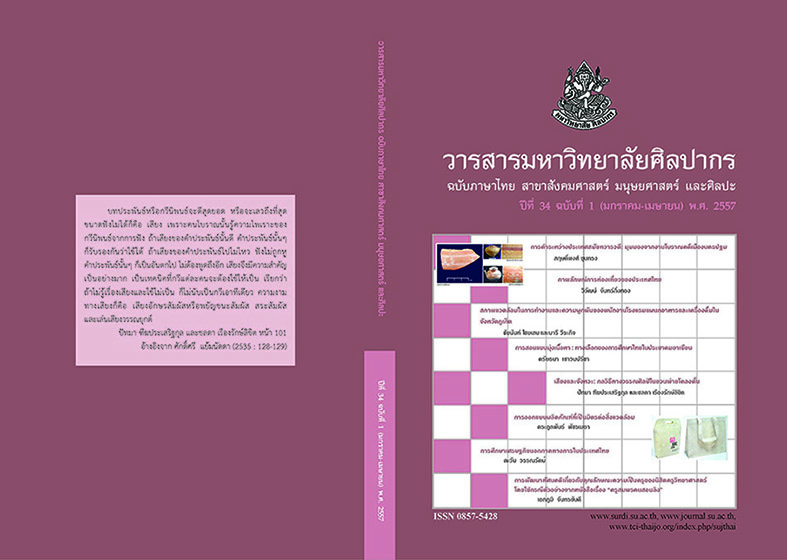การค้าระหว่างประเทศสมัยทวารวดี: มุมมองจากงานโบราณคดีเมืองนครปฐม The International Trade in Dvaravati Period : Aspect of the Archaeology of Nakhon Pathom
Main Article Content
Abstract
บทคัดย่อ
นครปฐมเป็นเมืองศูนย์กลางสำคัญของวัฒนธรรมทวารวดี ซึ่งเจริญอยู่ในช่วงราวพุทธศตวรรษที่ 12 – 16 การขุดค้นทางโบราณคดีที่เมืองนครปฐมในช่วง พ.ศ. 2552 – 2553 ทำให้ได้พบหลักฐานใหม่ที่สามารถนำมาตีความถึงการติดต่อสัมพันธ์กับต่างถิ่นและกิจกรรมการค้าในสมัยทวารวดี ผลการศึกษาพบว่า การติดต่อค้าขาย ในสมัยนี้มีทั้งกับชุมชนโบราณที่อยู่ภายในพื้นที่ของทวารวดีเองและกับชุมชนต่างถิ่นที่อยู่ไกลออกไป โดยเฉพาะกับอาณาจักรศรีวิชัยที่เจริญรุ่งเรืองบริเวณเกาะสุมาตรา (ประเทศอินโดนีเซีย) และคาบสมุทรมาเลย์ (ประเทศไทยและมาเลเซีย)
การติดต่อค้าขายกับบ้านเมืองศรีวิชัยทำให้ทวารวดีเข้าไปเป็นส่วนหนึ่งของเครือข่ายการค้าโลกสมัยโบราณตามเส้นทางสายแพรไหมทางทะเล ซึ่งเฟื่องฟูขึ้นอย่างมากในช่วงพุทธศตวรรษที่ 14 ภายใต้การสนับสนุนจากจีนสมัยราชวงศ์ถัง ความสัมพันธ์นี้ส่งผลกระทบบางประการต่อชุมชนทวารวดีที่เมืองนครปฐม เห็นได้จาก การขยายตัวทางเศรษฐกิจที่มีการปรากฏขึ้นของสินค้าจากต่างถิ่น ได้แก่ ลูกปัดแก้วสีเดียวแบบอินโด-แปซิฟิค และเครื่องถ้วยจีนสมัยราชวงศ์ถัง รวมไปถึงการแพร่หลายเข้ามาของพุทธศาสนานิกายมหายาน
คำสำคัญ: 1. การค้าระหว่างประเทศ. 2. สมัยทวารวดี. 3. โบราณคดี. 4. เมืองนครปฐม.
Abstract
Abstract
Nakhon Pathom was the major center of Dvaravati culture that flourished during 7th – 11th century AD. The archaeological excavations in this ancient city in 2009 - 2010 revealed some new evidence that can be interpreted in terms of contact and trade activities in Dvaravati period. The study reveals that Dvaravati had both domestic and international trades, especially with Srivijaya kingdom that flourished in Sumatra Island (Indonesia) and Malay Peninsula (Thailand and Malaysia).
The international trade with Srivijaya resulted in Dvaravati being part of the ancient world trade network known as the maritime silk route, which greatly flourished in the 9th century, under the support of T’ang dynasty of China. This relationship caused some changes to the Dvaravati community in Nakhon Pathom. This is shown by the economic growth with the emergence of non-local products, such as Indo–Pacific or monochrome glass beads and Chinese T’ang ceramics, as well as the spread of Mahayana Buddhism.
Keywords: 1. International trade. 2. Dvaravati period. 3. Archaeology. 4. Nakhon Pathom.


